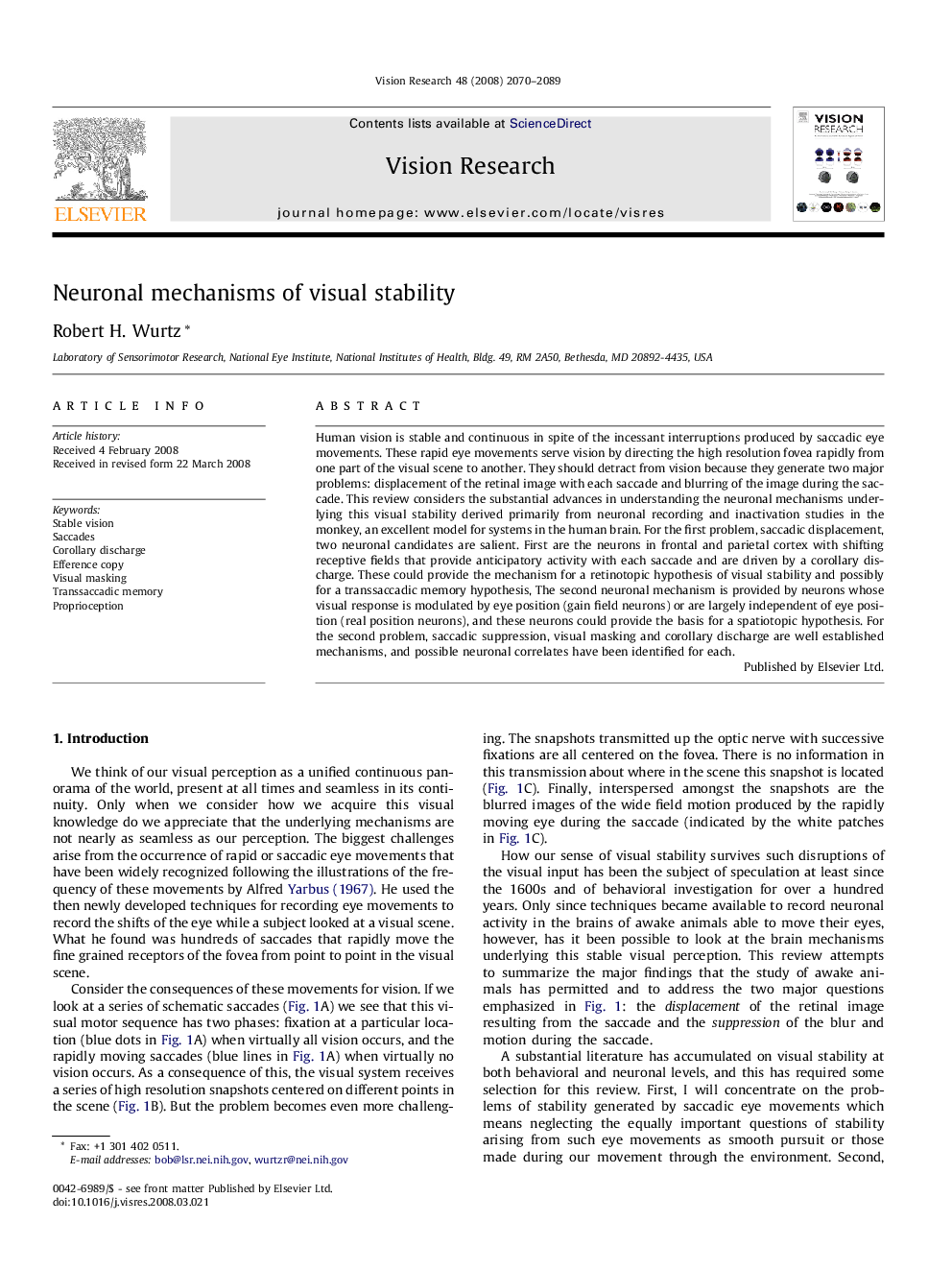| کد مقاله | کد نشریه | سال انتشار | مقاله انگلیسی | نسخه تمام متن |
|---|---|---|---|---|
| 4035144 | 1263509 | 2008 | 20 صفحه PDF | دانلود رایگان |

Human vision is stable and continuous in spite of the incessant interruptions produced by saccadic eye movements. These rapid eye movements serve vision by directing the high resolution fovea rapidly from one part of the visual scene to another. They should detract from vision because they generate two major problems: displacement of the retinal image with each saccade and blurring of the image during the saccade. This review considers the substantial advances in understanding the neuronal mechanisms underlying this visual stability derived primarily from neuronal recording and inactivation studies in the monkey, an excellent model for systems in the human brain. For the first problem, saccadic displacement, two neuronal candidates are salient. First are the neurons in frontal and parietal cortex with shifting receptive fields that provide anticipatory activity with each saccade and are driven by a corollary discharge. These could provide the mechanism for a retinotopic hypothesis of visual stability and possibly for a transsaccadic memory hypothesis, The second neuronal mechanism is provided by neurons whose visual response is modulated by eye position (gain field neurons) or are largely independent of eye position (real position neurons), and these neurons could provide the basis for a spatiotopic hypothesis. For the second problem, saccadic suppression, visual masking and corollary discharge are well established mechanisms, and possible neuronal correlates have been identified for each.
Journal: Vision Research - Volume 48, Issue 20, September 2008, Pages 2070–2089